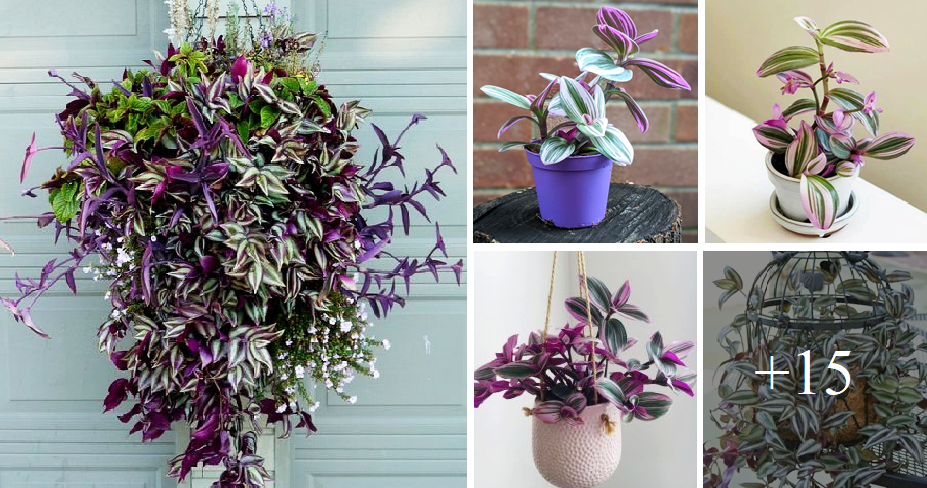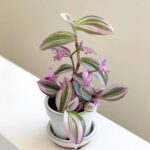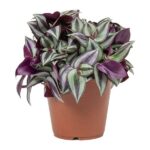
Tradescantia are not picky about their soil and will grow well in all soil. However, since they like to stay moist, consider mixing a moisture retainer such as vermiculite or peat moss into the soil.
Tradescantia loves moisture. Never let your plant get too dry, especially in winter. To keep the soil evenly moist, a regular watering schedule is best. Water until the water runs through the bottom of the pot, making sure your plant is not sitting in water.
Tradescantia thrive in moisture, and they love regular misting. The leaf tips turn brown without sufficient moisture. Placing the plant on a tray of pebbles in water is one way to ensure ambient humidity.
Fertilizing your Tradescantia is not absolutely necessary, but they will reward you with better growth if you feed them. Fertilize only in the spring and summer with a half-strength liquid fertilizer every month or a controlled-release fertilizer.
Pruning
Because of the vining nature they are named after, Tradescantia need regular pruning to maintain an attractive, bushy appearance. Try to pinch back about a quarter of the plant to encourage branching and increase fullness.
A special note: No matter how well you take care of your Tradescantia, they tend to get dry and leggy after about a year or so. But the plants are so easy to propagate that keeping your plant going is just a matter of planting cuttings.
command hooks used to hold curtain rods in place inside the farmhouse living room.
Tradescantia is one of the types of plants that can be passed from friend to friend from pinched leaf cuttings, producing full-scale, trailing houseplants for a multitude of people. Propagation is also an easy and effective way to “freshen up” your Tradescantia when it starts to show its age.
There are a few ways to propagate your Tradescantia. You can simply pinch a branch or a few branches and lower the cuttings into fresh soil. With regular watering, you will soon begin to see new growth.
You can also root your cuttings in water if you prefer. Alternatively, you can lay a longer stem of an inch plant over the soil, and it will root where the nodes touch the soil. Want more plant care tips? Check out our guide here.












